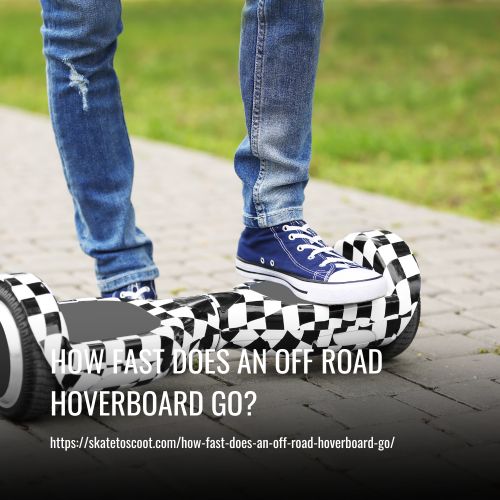As an Amazon Associate we earn from qualifying purchases.
Hoverboards, also known as self-balancing scooters, have become a popular mode of transportation over the years. But when did they come out? The prototype hoverboard was developed in 2013 by a Canadian inventor named Cătălin Alexandru Duru. He rode a hoverboard that he developed for a distance of 275.9 meters, setting the world record for the longest distance traveled by hoverboard.
In 2014, a Kickstarter campaign was launched for the Hendo Hoverboard, which received a lot of attention due to its innovative features and resemblance to the hoverboard from Back to the Future. However, these early hoverboards were expensive, lacked safety standards, and faced safety concerns, such as reports of catching fire.
It wasn’t until 2015 that hoverboards became a craze, with many Chinese companies producing cheap imitations. This led to Underwriters Laboratories setting safety standards for hoverboards, which helped to make them safer for consumers.

History of the Self-Balancing Scooter – The Early History of Hoverboard
The early history of the iconic self-balancing scooter, often referred to as the ‘hoverboard’, dates much further back than in recent years. The idea of creating a hoverboard dates back to the late 20th century and it gained popularity due to its portrayal in the 1989 and 1990 movies, Back to the Future II and III. These movies depicted a hoverboard that was similar to a skateboard but without wheels.
However, the actual development of a real-life hoverboard prototype took place in 2013 by Cătălin Alexandru Duru, a Canadian inventor, who set the world record for the longest distance traveled on a hoverboard by covering 275.9 meters. Since then, various types of self-balancing scooters have become popular, but they owe their origins to the futuristic imaginations of past decades.
When Was the Hoverboard Invented?
The hoverboard, a self-balancing scooter that has since gained popularity as a mode of personal transportation, was first invented in 2013. Although movies such as “Back to the Future” and “Blade Runner” featured hoverboards in the 1980s, it was not until 2013 that a Chinese-American inventor, Shane Chen, successfully created the first working prototype.
Chen encountered several difficulties during the three years he spent developing the prototype, which was based on an earlier creation of his, a slow wheel that eventually became an electric unicycle. It took an additional year for Chen to perfect the design before unveiling the hoverboard in 2014. The hoverboard was a revolutionary addition to the travel market, especially for short-distance travel.
Its popularity was fueled by “Back to the Future 2,” which portrayed the use of hoverboards in 2015, contributing to the excitement of the hoverboard’s 2014 release. The hoverboard’s many innovative features, including a powerful motor, a long-lasting battery, and intuitive controls, made it an attractive form of transportation that was easy and fun to use, and soon replaced scooters and regular skateboards.
Who invented the First Hoverboard?
The inventor of the first hoverboard was Shane Chen, a Chinese-American who was originally from Beijing, China. Chen emigrated to the United States in the 1980s and obtained a degree in agricultural metrology. He utilized this degree to establish his first business, CID Inc., which creates tools for plant and agricultural research.
Almost two decades later, Chen began inventing products for consumers under his new venture, Inventist Inc. His first big venture was the AquaSkipper watercraft. From the watercraft, Chen turned to a three-wheeled scooter but found out that RazorUSA already owned the license for it. He then created the self-balancing electric unicycle called the solo wheel which used multiple gyroscopic sensors to balance.
It was after the successful creation of the solo wheel that Chen developed the idea of a hoverboard, which he designed to make transportation easier and more fun for people by combining a car’s convenience with a skateboard’s freedom. However, his initial attempt was unsuccessful as the wheels were too small, making the design suitable for indoor usage only. Chen eventually made it rideable outdoors, but the design was not created until 2013.
Which Was the First Hoverboard?
The first ever hoverboard was created by Shane Chen, the inventor behind the AquaSkipper watercraft and the self-balancing electric unicycle called the solo wheel. This prototype, named the purple board, did not have wheels beneath the rider’s feet, unlike modern hoverboards. Despite not being a huge success, it opened doors for the hoverboards we know today. Chen made a few changes to his prototype and developed Hovertrax, leading to the first functional hoverboards released to the public in 2013.
In the same year, Chic Robotics released the Smart S1 self-balancing scooter, which was displayed at the Canton fair. Though the product did not hover and rolled smoothly on wheels, it proved very popular. Following its release, companies began developing similar devices, and their popularity soared when celebrities such as Justin Bieber and Kendall Jenner tried them out.
However, with popularity came issues of safety, poor battery life, and inadequate power for lift and propulsion, amplified by lower-quality knockoffs produced by Chinese manufacturers. Despite these setbacks, tech companies and independent innovators have gradually improved the design and safety of hoverboards, making them increasingly popular in personal transportation.
What Were Hoverboards Previously Called?
Previously, before the term “hoverboard” became mainstream, people referred to the popular gadgets as self-balancing scooters or self-balancing wheels. Some even argued that they shouldn’t be called hoverboards since they don’t hover. In 2014, Chic Robotics released a “hoverboard” called a self-balancing scooter that rolled smoothly on its sides like a sideways skateboard. However, this device is not a true hoverboard because it does not hover.
Instead, some people have described them as Segways without handles. If hoverboards were designed to resemble those in sci-fi movies like Back to the Future 2, they would look more like levitating skateboards.
There are varying terms used to refer to hoverboards, including roller boards and Segways, although the latter is not entirely accurate as it is a trademarked brand. Despite these differences, the most widely recognized term for this device remains hoverboard, which has become mainstream and easily recognizable to most people.
Birth of the Hoverboard
The birth of the hoverboard can be traced back to 2014 when American inventor Shane Chen first created the self-balancing scooter. Not only did he invent the hoverboard, but he was also the brains behind the monowheel. Unfortunately, Chen forgot to apply for a patent, leading to an explosion of Chinese factories producing cheap imitations.
It wasn’t until 2015 that the hoverboard gained worldwide fame thanks to several high-profile celebrities being spotted riding them. Justin Bieber, Cristiano Ronaldo, Chris Brown, Mike Tyson, John Legend, and Enzo Knol all helped to create a hoverboard craze by showcasing their personal transportation mode on social media.
The most attractive thing about the Hoverboard:
One of the most attractive things about hoverboards is that they are highly maneuverable and easy to master. They offer a unique, high-tech mode of transport that can help riders get from point A to point B quickly and easily.
1. Modern-Day Improvements and Certifications for Hoverboards:
In recent years, manufacturers of hoverboards have taken significant steps to address safety concerns related to the devices. Following the 2016 recall of hoverboards due to overheating batteries, companies have increased their focus on adhering to safety standards for personal e-mobility devices. Manufacturers are now implementing significant safety standards to reduce the risks associated with using a hoverboard.
In November 2016, the Underwriters Laboratories (UL) published the first edition of its standards, which were adopted by the USA and the Standards Council of Canada (SCC). These standards are specifically related to electrical systems for personal e-mobility devices.
UL 2272 is the certification for self-balancing scooters, and UL 2271 is the certification for Lithium-Ion rechargeable batteries that power these devices. The standards define requirements for meeting electrical and fire standards, impacting batteries and other electrical components. Overall, these new standards and certifications have significantly improved the safety and quality of hoverboards.
2. Unique technology:
Hoverboards are a unique mode of personal transportation that deploys innovative technology to make commuting easy and fun. Combining advancements in logic, motion sensors, and electric motors, the device comes with an array of technical features that make it stand out from other devices used for commuting.
These features include a gyroscope and an infrared sensor that work together to maintain balance while riding the hoverboard. Additionally, electric motors powered by battery packs propel the wheels to move the device forward or backward based on the pressure applied by the rider’s feet. Thus, this integration of advanced technology, in a minimalistic design, has made the hoverboard a popular choice for indoor usage and commuting over short distances.
3. An eco-friendly way to travel:
Traveling in an eco-friendly way is becoming increasingly important to many people. Have you ever considered a hoverboard as an option? Not only is the hoverboard unique and fun, but it also provides a sustainable mode of transportation.
Most hoverboards are powered by rechargeable batteries, which are the same type of batteries found in laptops and mobile phones. When the battery is low, all you have to do is plug in your hoverboard and let it charge. By following your hoverboard’s charging guide, you can help extend the lifespan of its rechargeable battery.
Hoverboards are a great way to get around while also reducing your carbon footprint. So, the next time you need to make a quick trip, consider hopping on a hoverboard instead of driving a car or taking a taxi.
4. Cool tricks you can do:
Looking to add some cool tricks to your hoverboarding routine? Look no further! In addition to being a mode of transportation, hoverboards also provide an opportunity to compete with other board sports and show off some impressive moves.
For beginners, start with “The Spin,” where you spin in circles. For intermediate riders, try “The One-Foot Roundabout” by standing on one foot and lifting the other foot backward while using your free hand to hold onto the board’s bumper. Finally, experts can try “The Turnstyle,” where you jump 180 degrees halfway into “The Spin” while the board is spinning in a circle. Remember to perform these tricks in a safe environment and to wear proper safety gear.
5. Hoverboard Seats with Steering Wheel:
Hoverboard Seats with Steering Wheel have become a popular choice among hoverboard enthusiasts. Advancements in battery, motor, and control technologies have allowed for the creation of this innovative device.
Although not a true hoverboard in the sense of levitation, Hoverboard Seats with Steering Wheels offer a unique and fun mode of transportation. The addition of a steering wheel and seat allows for greater control and stability, making it a great option for rough terrain and extended use.
By attaching a hoverboard to the seat and steering wheel, users can enjoy a comfortable and safe ride while still experiencing the thrill of hoverboard technology. While safety concerns have been raised about traditional hoverboards, Hoverboard Seats with Steering Wheel have been designed with safety features considering those concerns.
FAQs
The term “hoverboard” gained popularity in 2015 when self-balancing scooters, often referred to as hoverboards, became widely available for purchase.
While the concept of a hoverboard was popularized by science fiction, modern self-balancing scooters were invented by multiple companies and individuals around 2013-2014. There isn’t a single inventor credited with creating the entire concept.
The concept of a hovering, frictionless board as seen in movies like “Back to the Future” was a sci-fi idea and not commercially available. However, self-balancing scooters, often called hoverboards, emerged in the consumer market around 2015.
The surge in popularity of hoverboards in 2015 can be attributed to their appearances in viral videos, celebrity endorsements, and their perceived futuristic appeal, which captivated consumers’ interest.
Yes, safety concerns arose shortly after their release due to reports of hoverboards catching fire or malfunctioning batteries. These issues led to product recalls and increased safety regulations for manufacturers.
While the initial hype has subsided, hoverboards remain a popular personal transportation option for some. Manufacturers have improved safety features, and newer models continue to attract enthusiasts, albeit not as intensely as during the initial craze.
Conclusion:
Hoverboards may have only been around for a few years, but they’ve already made a huge impact on the world of transportation and personal mobility. From their humble beginnings to the present day, hoverboards have come a long way and continue to evolve with new features and capabilities. Who knows what the future holds for this exciting technology? One thing’s for sure: we’ll be along for the ride!
Amazon and the Amazon logo are trademarks of Amazon.com, Inc, or its affiliates.



